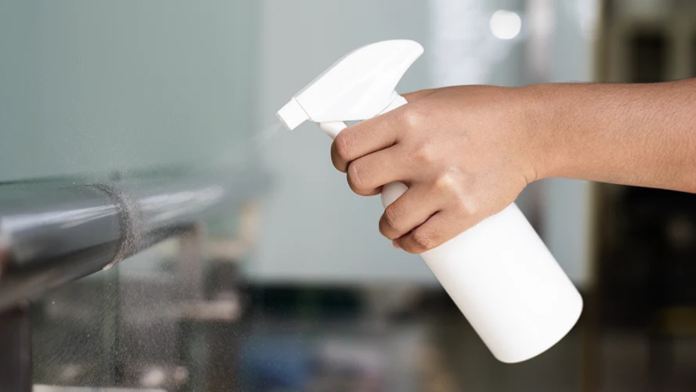Spray bottles provide multi-functional solutions for residential and commercial purposes, such as cleaning, personal upkeep, and industrial use. Spray bottles experience leakage problems, which present three main issues to users, including operational inconveniences, wasted product material, and unsafe situations. Exploring spray bottle leak causes, together with how to fix a spray bottle, enables users to extend their bottle service life and optimize product operation.
Loose or Damaged Nozzle
Cause
Improper nozzle attachment alongside loose fitting produces the most common type of spray bottle leaks. The bottle usage causes the nozzle to lose its tightness, and cross-threading develops after the nozzle is inserted into the bottle.
Fix
Examine the nozzle installation for correctness, then secure it, but do not over-tighten it. The nozzle must be replaced with a new one when it presents any damage or cracking symptoms. The alignment of the nozzle needs checking to prevent leakage that comes from improper alignment.
Cracks in the Bottle or Nozzle
Cause
Tank-like plastic spray bottles sustain cracks mainly due to usage frequency, as well as system pressure and unintended bottle drops. The bottle remains standing vertically but fails to prevent constant leakage from developing due to its cracked state.
Fix
Check for any cracks that might be visible on the bottle and nozzle. The affected bottle part or the entire bottle needs replacement when cracks appear. Minor bottle or nozzle cracks can be temporarily fixed with waterproof tape or epoxy glue, yet replacement stands as the most effective permanent solution.
Faulty or Worn-Out O-Ring/Gasket
Cause
The seal uniting spray bottle nozzles to bottles uses an O-ring or gasket present in most bottles. Loss of durability leads the component to become brittle or misaligned, which produces leakage in the unit.
Fix
You should inspect the O-ring or gasket to determine if it is absent or if it shows any signs of damage or deterioration. A new replacement part of matching dimensions should be installed when the existing component becomes worn out. Petroleum jelly applied in small amounts to the O-ring will improve its ability to seal the connection.
Overfilled Bottle
Cause
Spraying a bottle to its maximum capacity creates high internal pressure that can make liquid escape from the nozzle or trigger.
Fix
Reserve the upper part of the bottle empty to enable airflow, which prevents internal pressure buildup. Vigorous shaking of the bottle should be avoided because it generates internal pressure.
Damaged or Loose Trigger Mechanism
Cause
The trigger mechanism loses its tightness or sustains damage over time, which causes the liquid to leak from the trigger area.
Fix
Check the trigger mechanism for signs of looseness or any visible damage. You should tighten the trigger assembly when it shows signs of looseness. If the trigger stops working correctly, you should replace the spray head.
Improper Storage and Handling
Cause
Spray bottles positioned improperly, either on their side or upside down, may leak. High temperatures combined with direct sunlight exposure cause plastic components to weaken until they start leaking.
Fix
Spray bottles must always be placed upright on flat surfaces for storage. Bottles need to stay out of direct sunlight and extreme temperature conditions. Secure the bottle cap or nozzle tightly before placing the bottle for storage.
Clogged Nozzle or Spray Tube
Cause
Excessive pressure develops when nozzles or spray tubes become clogged, forcing the liquid to leak from unexpected locations.
Fix
You should put the nozzle into warm water while outside the bottle to remove potential blockages. You should insert the nozzle into vinegar or rubbing alcohol because these substances will break down the accumulated substances. A small pin or needle should be used to clean debris from the nozzle hole.
Poor Quality Spray Bottles
Cause
The use of thin plastic or poor materials in spray bottles results in an insecure fit, which causes the bottles to leak frequently.
Fix
High-quality spray bottles should be purchased either in durable plastic or glass construction. Look for trusted brands that produce leak-resistant spray bottle designs. Regular spray bottle users should invest in industrial-grade bottles to achieve longer bottle life.
Preventive Measures to Avoid Leakage
Several preventive measures exist to increase spray bottle longevity while minimizing leakage problems. Spray bottle maintenance requires periodic inspection of nozzles and seals for cleaning purposes. Place bottles upright in a dry and cool environment. Select bottles that are made for repeated use and designed to be durable and of high quality.
Conclusion
The frustrating problems that exist in spray bottles can be easily diagnosed while offering simple solutions for repairing the leaks. The foundation of a swift solution emerges after discovering the origin of the leakage, which includes problems with the nozzle or defective O-ring closure or blockage within the spray tube. Spray bottle lifetime length and operational disruption together with waste production can be prevented using appropriate maintenance techniques and preventive measures.










